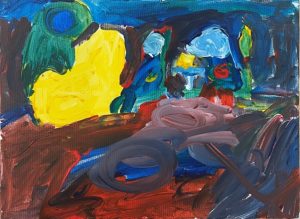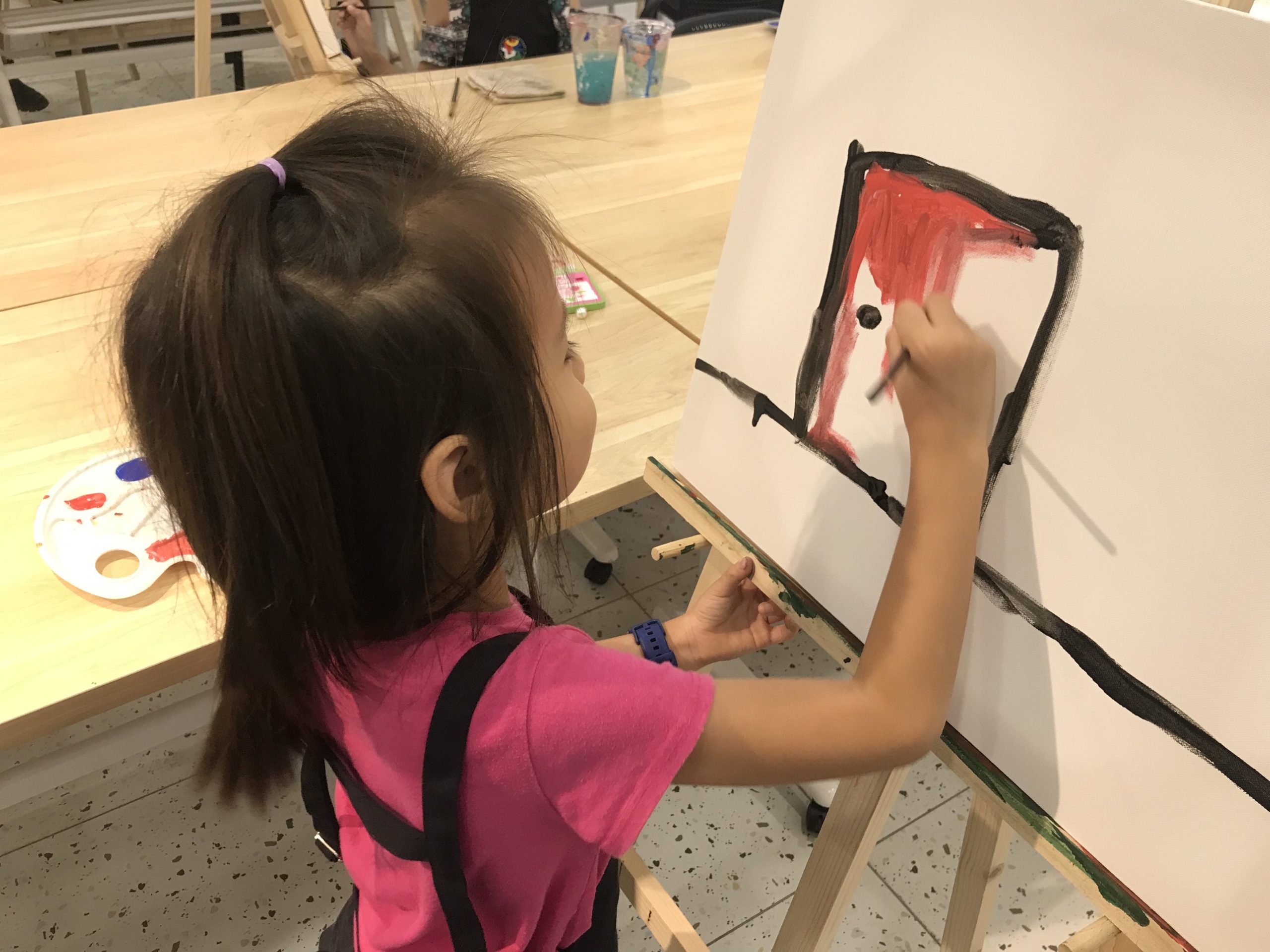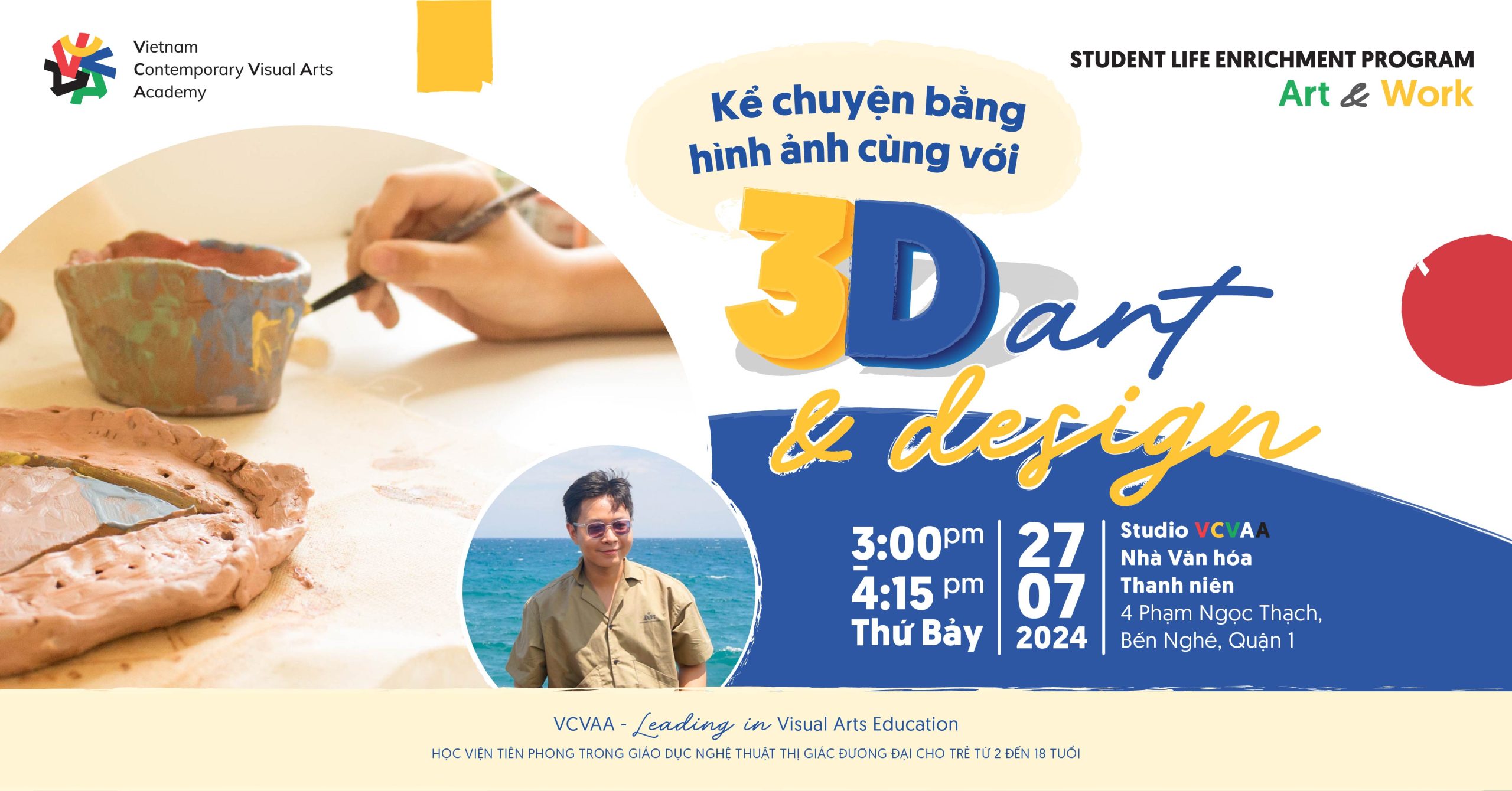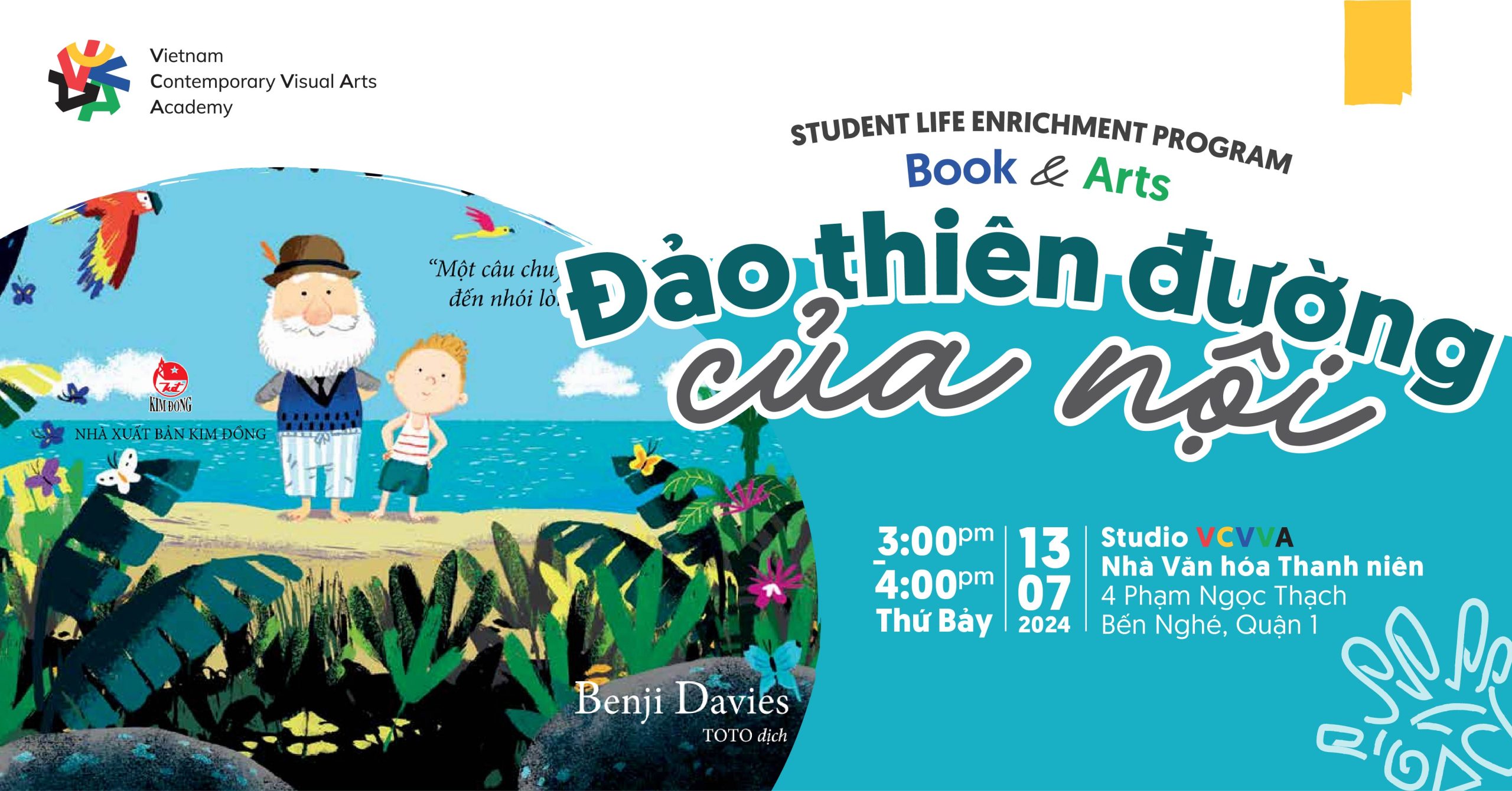RECEIVING CHILDREN AND THEIR WORK WITH POSITIVE ENCOURAGEMENT
Parents, let's try to recall the last time you gave praise when young ones proudly displayed their artwork. How did you praise them? What reactions did you notice from the children? And what thoughts did you have afterward?
Positive encouragement focuses on acknowledging and praising efforts, progress, and specific details in children’s artwork and creative processes rather than external perceptions. In this article, positive encouragement will be understood and translated as “encouragement” to distinguish it from “praise.”
Positive encouragement has several benefits for children:
- Attaining joy in their work: Encouragement like, “Mom sees you’re really happy; you enjoy drawing dinosaurs, don’t you?” or “Dad sees you’re very patient in creating this artwork,” can bring happiness as children see their own interesting and unique aspects recognized and appreciated.
- Nurturing intrinsic motivation: Adults need to believe that children have intrinsic motivation, and they will cooperate and learn if their intrinsic motivation is met. Positive encouragement reinforces children’s self-belief, provides confidence, and motivates them to make positive and sustainable choices for themselves.
- Long-term effectiveness of positive encouragement lies in building independence, initiative, and the ability to self-evaluate and critique. Children will find intrinsic motivation when their curiosity is acknowledged, encouraged, and supported. When a child can create motivation for themselves, they will have stronger mental resilience and won’t depend on recognition from others.
3 IMPORTANT ATTITUDES FOR PRACTICING POSITIVE ENCOURAGEMENT
Here are three important attitudes that parents need to focus on when viewing artwork, asking questions, and giving praise:
- Approach with a desire to understand and connect with the child’s work. At this point, emotions towards the artwork and the children’s need for listening and recognition should be the foremost focus for reception and acknowledgment. Then, if necessary, parents should introduce feedback, adjustments, or developments.
- Be sincere in praising the child. Artwork reflects personality, effort levels, and attention to detail in the creative process. Therefore, praise should be conveyed with sincerity. Give praise in moderation and limit the feeling of “overdoing it.”
- Pay attention to how you converse with the child about the artwork. Not just the content, but how you speak and praise the child, including body language or tone of voice, when paid attention to, will help the child feel reassured and ready to share.
A note that when viewing art coincides with busy times, parents don’t need to immediately engage with the artwork. Clearly communicate to the child about your busyness (they will understand and accept), and make sure that during this new time frame, you will devote attention to listening to them, as previously discussed. This will teach children the value of a promise.
4 STEPS TO RECEIVING, ENJOYING, AND ACKNOWLEDGING CHILDREN’S ARTISTIC PRACTICE
Before artworks full of innocence and without specific shapes, how do parents usually feel? If parents feel confused or unsure where to start, here are 4 basic steps to appreciate and enjoy the joy from children’s artwork.
Step 1: Receiving
Step 2: Viewing the artwork
Step 3: Listening to sharing & Asking questions to the child
Step 4: Acknowledging & Encouraging
Step 1: Receiving the child’s artwork
Step 1: Receiving the child’s artwork
Right before giving praise, encouragement, or asking questions, what should parents do? The ‘Receiving’ step will help parents establish their own attitude when unsure how to react or praise when viewing artwork.
- Parents, take a moment to sense yourselves now!
- Body language: Relaxed and calm.
- Tone of voice: Engage in conversation with the same tone you use when playing or relaxing with the child.
- Posture: If possible, be at eye level with the child for easier listening.
- Approach to receiving artwork: Remember the times when you received gifts from loved ones. Receive the child and the artwork with gentleness and without haste. If possible, receive with both hands, showing appreciation for the child.
- Mindset: Be ready to be curious and open-minded, as the world of children is always full of surprises and excitement.
Step 2: Viewing and enjoying the artwork
An invitation to parents: view the artwork with an attitude to understand and connect, not to interpret the child, judge, or comment. Parents, temporarily put aside encouragement, questions, or suggestions for now! This will make the child feel comfortable to open up and share more in this space.
Here are 3 perspectives parents can observe and pay attention to when viewing the child’s artwork:
- Overall view of the artwork: What do you see in the painting: the theme, atmosphere, your feelings when viewing it, etc.?
- Detailed observation: Some details parents can observe in the child’s artwork:
-
- Characters in the painting
- Setting/Space in the painting
- Colors
- Distances between objects in the painting
- Lines and quantity
- Materials used and quantity, frequency of use
- Patterns
- How the child arranges objects in the painting (referred to as ‘composition’): stacking, separating, etc.
- Use of brush strokes and materials
Step 3: Listening to sharing & Asking questions to the child
After understanding and connecting more with the artwork, it’s time to listen and ask questions to the “young artists”. The children are probably very excited to share all their ideas, stories, and emotions because listening and interacting with the artwork come from the closest and most loving source, which is a huge source of encouragement and support for the children!
When children show an active desire to share, parents need to focus on listening completely. Before asking further questions, parents should paraphrase the child’s story (also known as ‘paraphrase’). This helps a child feel more assured knowing that what they share is listened to and acknowledged. This process falls within the realm of Active Listening.

Steps for Active Listening. Source: Seekhle Learning.
In addition to allowing the child to share freely, parents should actively ask questions to encourage the child to share about their artwork and finished pieces, as well as to stimulate ideas for developing the current work or applying them to future pieces.
- Ask questions about how the child uses elements in the piece, such as color choices, arrangement of elements in the painting. Parents can refer back to the 3 viewing suggestions in Step 2 to converse with the child.
- Discuss the content of the piece. For example: “What did you make today/what is it/a fish?” or “What story does your painting tell today?”
- Discuss the process with the child. For example: “What materials did you use to create the painting? What part of your piece did you enjoy the most? What do you think you did well?”
- Engage in conversations to stimulate imagination, especially sensory stimulation. For example: “If the character in your painting could speak, what do you think their voice would sound like?” or “If the lines in your painting could sing, what kind of voice would they have?”
- Converse to suggest new approaches. For example: “If you could choose a different color, what color would you choose?”
- Discuss feelings. For example: “How did you feel during the process?”
Important notes while asking questions:
- The biggest mindset is always to ask questions to understand and connect with the child, as well as to help the child connect more with art.
- There is no right or wrong in questions and answers.
- Ask open-ended questions to encourage the child to think and share more rather than “yes-no” questions. For example: “How do you feel after finishing your drawing?” instead of “Are you happy?”
- Avoid labeling the child’s artwork before listening to their sharing.
Sometimes, parents may encounter situations where they are stuck for ideas to ask. At that time, parents can use the “magic spell” from the VCVAA Teachers group: “Tell me about your painting!” and sincerely listen to the child’s sharing. Then, based on their sharing, parents can ask more questions to further stimulate imagination or develop their artwork and finished pieces.
PRACTICE CORNER
Here is an artwork by a student from the Exploration class at VCVAA. Parents, let's practice asking questions based on the above two steps for our young artist!

Peaceful on the Plane (2023). This piece was created by a student at VCVAA. It is made using poster colors on canvas.
Step 4: Acknowledge & Encourage
Below is the "DLP" Praise Practice Structure currently used to acknowledge and encourage children at VCVAA:Here are some examples of praise following the DLP structure:
- Parents see that the child has drawn many pictures and details to share scenes from the countryside, making the painting vivid. Keep drawing more pictures to tell us about the trip to the countryside, okay!! (DLP structure)
- Parents notice that today the child used red and orange, two colors the child rarely uses to paint. Let’s try out many more new things together! (Structure with D-P)
- Parents see that today the child has focused on their work from the beginning to the end of the hour. Hope that tomorrow the child will continue to excel! (Structure with L-P).
During practice, the last P (Praise), parents can use encouraging actions like high-fives along with words.
Some tips for parents during practice:
- Be sincere and authentic.
- Avoid excessive praise. Be clear, specific, and focus on small things.
- Provide specific praise for the children when discussing their artwork.
- Praise effort and process. Avoid praising achievement and ability. Praise the “child today” compared to the “child yesterday”. Avoid comparing the child to someone else or conditional praise.
- Change from “Parents like” to “Parents notice”. This is an easy transition from praise and encouragement to an objective perspective. You can also encourage the child to self-evaluate by asking, “Parents want to hear your thoughts first.”
CONCLUSION
This article has introduced parents to positive praise, the mindset of praise, and the steps to positive praise when viewing children's artistic works/achievements. Positive praise in development is a long journey of observation and learning while accompanying, bonding, and connecting with the children. Alongside the children, parents should also encourage and acknowledge themselves for their efforts! NGUỒN THAM KHẢO VÀ BIÊN SOẠN: 1. Harvard University Center for the Developing Child. How to motivate children: science-based approaches for parents, caregivers and teachers. Retrieved from https://developingchild.harvard.edu/resources/how-to-motivate-children-science-based-approaches-for-parents-caregivers-and-teachers/ 2. Parenting NI. Importance of Praise and Encouragement. Retrieved from http://www.parentingni.org/wp-content/uploads/2016/04/Importance-of-Praise-and-Encouragment-2.pdf 3. Harvard University Center for the Developing Child. Understanding Motivation: Building the Brain Architecture That Supports Learning, Health, and Community Participation. Retrieved from https://harvardcenter.wpenginepowered.com/wp-content/uploads/2018/12/wp14_reward_motivation_121118_FINAL.pdf 4. Lowry, L, Hanen SLP & The Hanen Centre. “Good job!” Is Praising Young Children Good idea?. Retrieved from "Good job!" Is Praising Young Children a Good idea? (hanen.org)




